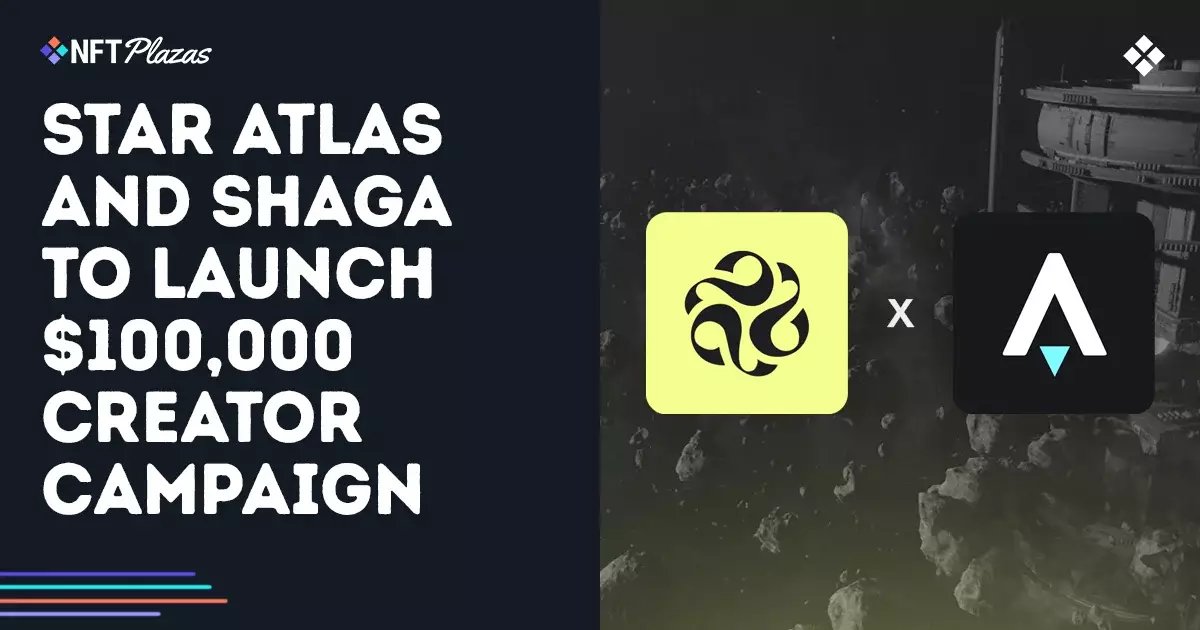The recent announcement of the $100,000 Creator Campaign by Star Atlas, in partnership with Shaga, marks a pivotal moment in the realm of NFT gaming. As technology and gaming intersect more seamlessly, interactive viewer participation on platforms like Twitch is becoming not just a luxury but a cornerstone of modern game design. By incentivizing content creators to utilize Shaga during livestreams, Star Atlas is not just increasing its player engagement but redefining the boundaries of what online gaming can accomplish. This initiative, which allows players to use Shaga to let viewers take over gameplay, fundamentally bridges the gap between content creation and interactive gaming, setting a new standard for user engagement.
The Power of Community Interaction
At the heart of this campaign lies an inherent understanding that modern gaming is increasingly communal. Star Atlas’ leveraging of Shaga fosters a unique environment where creators can share gameplay with their viewers through interactive tools. The provision of exclusive rewards, including $ATLAS tokens and Ship NFTs, not only incentivizes participation but also nurtures a thriving community that feels valued and invested in the game. This community-focused strategy is reminiscent of how gaming giants like EVE Online have thrived by prioritizing player experiences and fostering a shared economy. By implementing a system that allows real participation, Star Atlas is on the verge of creating a new blueprint for how games can be played and experienced.
Unlocking Financial Potential in Gaming
The financial stakes of this initiative cannot be ignored. With a prize pool of $100,000 comprised of tangible assets like $ATLAS tokens and NFTs, the campaign taps into the competitive spirit of gamers and content creators alike. This is significant not just for Star Atlas but for the broader gaming ecosystem where financial incentives can often make or break user engagement. Unlike traditional gaming, where rewards are typically restricted to in-game assets, this approach allows creators to earn real-world value that grows and evolves with the community’s involvement. Such moves signal an ongoing trend where decentralized economies empower players and build durability into game environments.
The Technology Behind the Scenes
Using Solana’s advanced blockchain technology as the backbone for Star Atlas’ economy propels the gaming experience to new heights. This smart choice ensures players have ownership over their virtual assets, which is crucial in a market where digital ownership is often challenged. The integration of advanced technology, specifically the latest ultra-low latency capabilities through Shaga, augments the gaming experience by providing smooth, real-time gameplay interactions. Savvy developers and gamers will recognize this as a significant leap—not just in technical execution but in user satisfaction, which is paramount for retention in a crowded marketplace.
Looking Ahead: The Future of Star Atlas
Star Atlas is not resting on its laurels; its partnership with SingularityNET to integrate AI agents signifies a bold trajectory toward a more immersive gameplay experience. The introduction of systems like AIRIS and OpenCon Hyperon, which will enable NPCs to learn and adapt, indicates that the team is not simply creating a game but building a living ecosystem where player experiences are enhanced through intelligent interactions. The ability to provide nuanced NPC engagements and contextual guidance could be revolutionary, setting Star Atlas distinctively apart from its competitors.
Moreover, consistent updates to the game, paired with a clear roadmap, exemplify a commitment to honing and evolving the player experience over time. In an industry where many games falter due to lack of support post-launch, Star Atlas’s proactive strategy could be the cornerstone of its long-term success.
Star Atlas and Shaga’s collaboration with a focus on community-focused rewards creates an innovative nexus for interactive gaming. With its commitment to leveraging technology that enriches both player engagement and financial rewards, the project showcases the future of driven gaming experiences through decentralized economies. As the campaign unfolds, the industry will keenly observe whether such initiatives can galvanize both participation and investment, extending far beyond mere gameplay into a rich, interconnected digital landscape.















